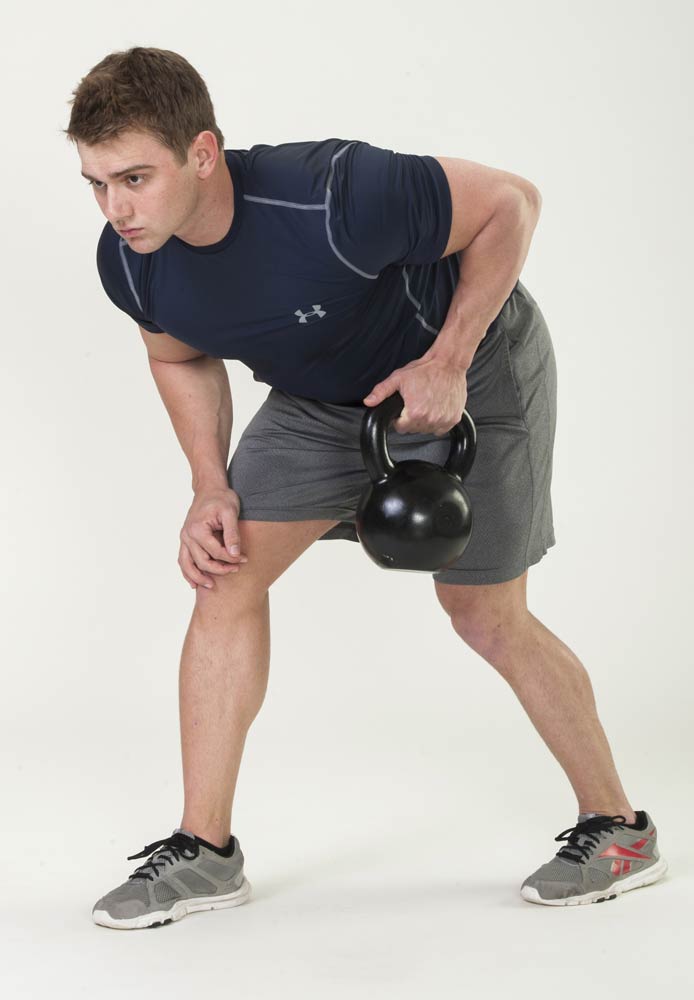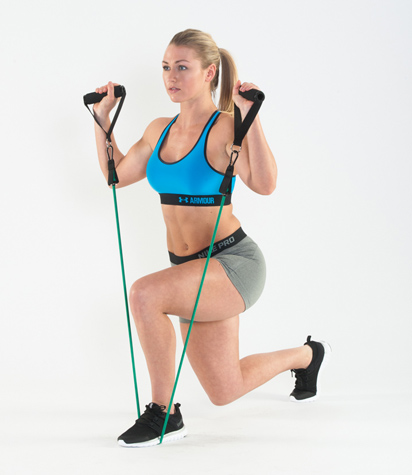 Resistance bands or free weights? Chances are you’ve overheard this debate at the gym, or perhaps you’ve been brave enough to engage with it online and found yourself diving down the rabbit hole.
Resistance bands or free weights? Chances are you’ve overheard this debate at the gym, or perhaps you’ve been brave enough to engage with it online and found yourself diving down the rabbit hole.
While it’s not as polarizing or controversial as other exercise topics (yet!), one thing that’s certain is that the popularity of elastic resistance training (ERT) has grown rapidly since the ‘Awesome 80s’ when the world went through an unforgettable fitness craze as resistance bands became mainstream.
Colorful leotards, leg warmers, and headbands aside, resistance bands continue to hold their own, allowing us to work out on the go.
In fact, this study from the University of Louisiana confirms that adding resistance equipment to your workout can be even more beneficial than just sticking to free weights.
Unfortunately, there’s no one “right” answer. The bands-vs-weights debate remains largely subjective, especially with which muscle-building method helps you attain results faster, safely, and even more affordably. And if you’re still trying to decide whether to use bands or weights or even a combination of both, it’s a subject worth investigating.
Both approaches have their pros and cons, which we’ll unpack below!
Remember, few things in exercise science are black and white, but this should help you figure out which is best for you.
Building Muscle
 Wondering if you can build muscle (aka hypertrophy) with resistance bands? The answer is yes, absolutely, because you’re working with gravity and your own body weight.
Wondering if you can build muscle (aka hypertrophy) with resistance bands? The answer is yes, absolutely, because you’re working with gravity and your own body weight.
However, if you are looking to build muscle over a shorter period of time, then it’s iron and steel that wins this round. Free weights are always good, but we prefer kettlebells.
Do a little research online, or head to your nearby gym, and you’ll find that they are still highly regarded as the industry standard for strength.
Think about it like this: bands have variable resistance — it starts off easy, but only as we stretch further does it get progressively harder. This means that it only truly challenges our muscles right at the very end.
Certain movements like a bicep curl, for example, can quickly become a partial curl. While resistance bands stimulate muscle growth, with free weights (like dumbbells, barbells, and kettlebells), our muscles are challenged through the full range of motion.
With that in mind, if you’re still set on burning rubber to help build muscle, the simplest solution here is to shorten the band or use a thicker option to increase resistance.
The key to mastering muscle building with resistance bands is to use a progressive overload approach. This means doing slightly more sets and reps over time and pairing your training with adequate rest and proper nutrition.
Control and Safety
Aside from being a great travel companion, resistance bands also make stellar stretching buddies. You can use them to open up your shoulders and hips, strengthen weak movements, improve joint health, and much more.
Holding stretches with a band not only increases muscle relaxation but encourages flexibility which prevents injuries. This is why they’re highly regarded by physiotherapists (and top athletes such as Tom Brady) when it comes to rehabilitation and recovery.
Overall, both tools can be easily adapted to a range of fitness levels, provided you’re smart about it. Lifting free has its advantages and can be great for improving your posture, general strength, and mobility. If you stay focused, especially when lifting, you can use them safely and effectively. There is still a high risk of injuring vulnerable areas of the body (think joints: wrists and knees) if you’re not careful.
As a word of warning, you do also need to be on high alert in case you drop one, although accidentally letting go of a resistance band mid-stretch might not leave you any better off.
Convenience and Versatility
 At face value, there are quite a few obvious advantages to using resistance bands. They’re small, light, and a lot more portable than free weights and exercise machines.
At face value, there are quite a few obvious advantages to using resistance bands. They’re small, light, and a lot more portable than free weights and exercise machines.
While weights allow us to try out a ton of different exercises from the comfort of our own homes, they can be clunky and take up quite a bit of space. As any fitness-guru will tell you, a stubbed toe is bound to happen if you don’t have a dedicated workout area in which to use and store them.
Comparatively, resistance bands can easily be folded away in the top drawer and weight fraction of a beginner 5lb dumbbell.
You can easily add one to your carrier bag when you’re on the go, making it the perfect travel companion.
Legs, arms, back, abs, chest. The list is endless when it comes to all the areas of the body you can focus on when it comes to free weights. However, since weights have a finite range of resistance, resistance bands take center stage when it comes to versatility.
Attach it to a door using our door anchor, a pole, or even your own body. Due to their elasticity, they offer an endless range of exercises, and you can easily switch it up from time to time, allowing yourself to have a little fun along the way.
Price and Purchasing
With many people looking for more workout flexibility, it’s no surprise that budget-friendly alternatives for staying in shape at home are becoming more popular.
From flexibility to affordability, resistance bands have become an integral part of any home-gym equipment kit, joining the likes of foam rollers and stability pods. And with a click of a button, you can have any of these delivered straight to your door without breaking the bank.
Since the cost of shipping may also be weight-dependent, online delivery costs will be considerably higher for free weights. To put it simply, this type of heavy-duty equipment can easily become considerably more expensive.
Unlike your standard steel and iron weights, resistance bands are not just bland and beige. These days they come in a wide selection of cheerful colors, shapes, and sizes. You can even add in useful accessories like ankle straps.
With a click of a button, you can order yourself a standard single band (great for beginners) as well as looped, tube, figure-8, and two-sided options —whichever you decide on depends on how you want to use it.
The bottom line…
Overall, any type of exercise is good for us, provided we do our research and don’t push ourselves too hard.
While free weights reign supreme when it comes to strength training, resistance bands continue to hold their own within the world of health and fitness. With new studies being conducted each year, they are highly regarded as more than just an entry-level tool for young and old alike.
While both bands and weights share a few things in common, each has its unique benefits, ticking all the right boxes when it comes to creating an effective resistance-training routine. And, with this in mind, perhaps it’s not about pitting one against the other, but rather tailor a routine that works for you, and maybe even incorporates a healthy balance of both.